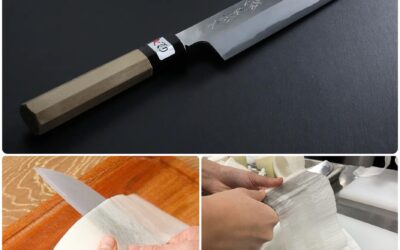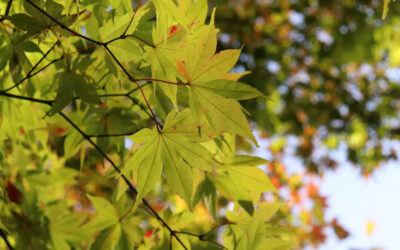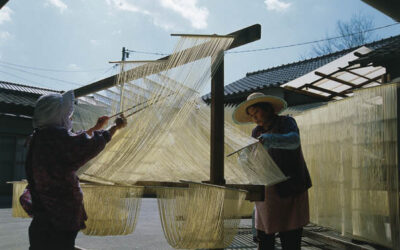Tsutsumu… wrapping, enveloping
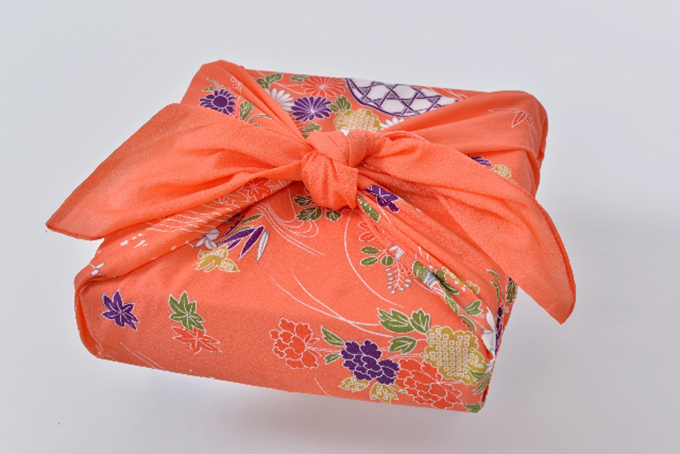
FUROSHIKI
Written with calligraphy for “bath” (furo 風呂) and “spread out” (shiki 敷) the word is rather curious for a piece of cloth. It seems the origins hark back to the Muromachi Period (1336-1573 AD) when Daimyo lords would spread out a cloth in which to wrap their clothing as they disrobed to bathe. That cloth began to be called furoshiki.
By the Edo Period (1603-1868) the use of furoshiki had become widespread as a convenient way for townspeople to carry all sorts of packages and bundles.
Furoshiki remain popular today, especially as a wrapper for gifts.

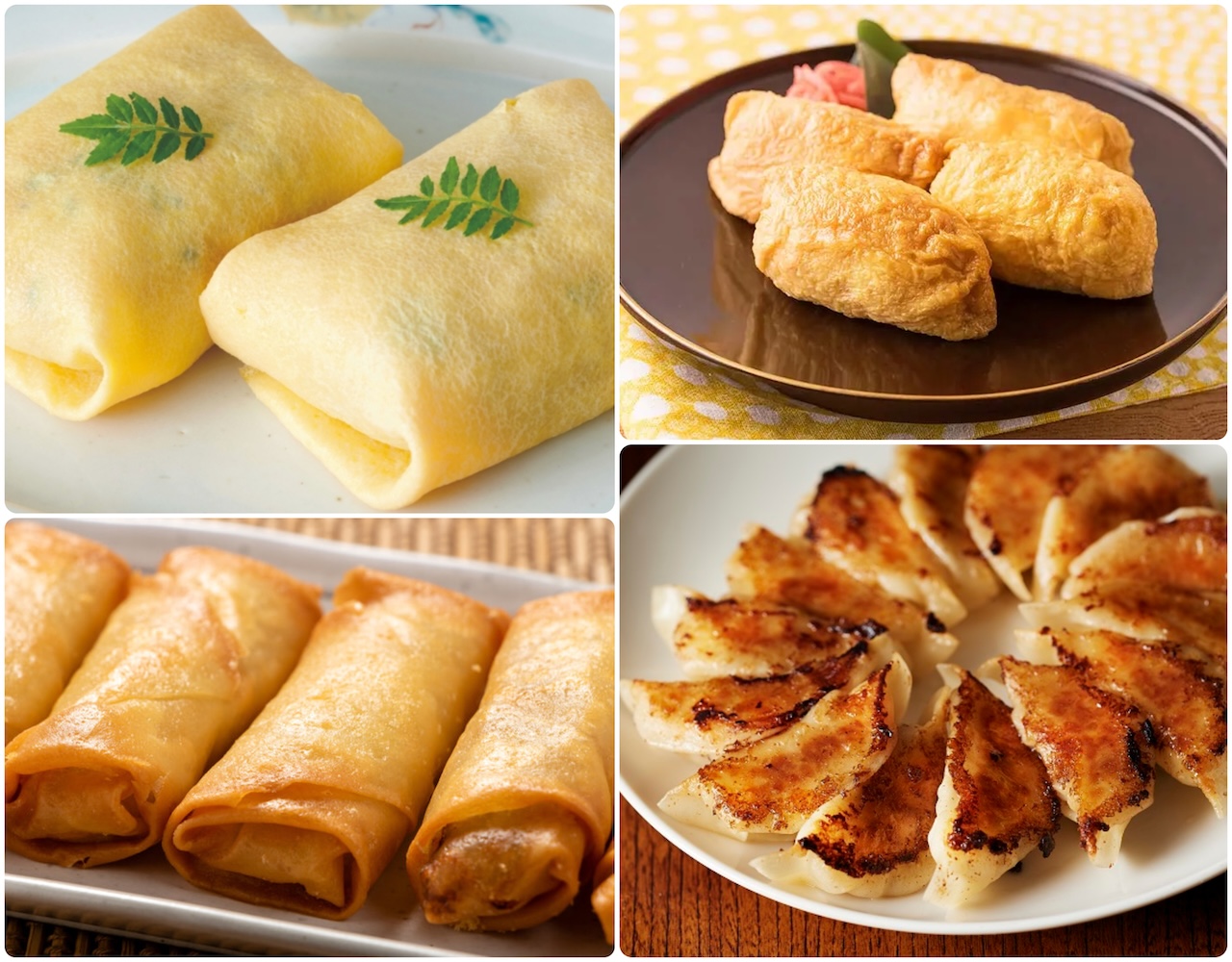
Edible Wrappers
The four dishes above boast wrappers that are edible: At top left is fukusa-zushi, so named because the thin omelet wrapped around sushi rice resembles the silk cloth fukusa 帛紗 (ふくさ) used in the tea ceremony. Top right is inari-zushi, sweetly soy-simmered pouches of fried tōfu stuffed with tart sushi rice. Inari shrines are dedicated to rice cultivation, hence the name. In the Kanto area (Tokyo and environs) cylindrical shaped inari-zushi are the norm. The shape is called tawara because it resembles sheaves of freshly harvested rice that have been bundled in rice straw. In the Kansai area (Kyoto, Osaka, Nara, Kobe) however, inari-zushi are typically triangular-shaped. Triangles suggest fox ears and there is a strong association of fried tofu with fox legends.
On the bottom, left are haru maki spring rolls stuffed with shreds of meat and vegetables. At the far right on the bottom are yaki gyoza, pan-fried dumplings. Wrappers are of various textures, from soft and chewy fried tofu, to crisp, crunchy spring rolls. All of these morsels can be consumed whole.
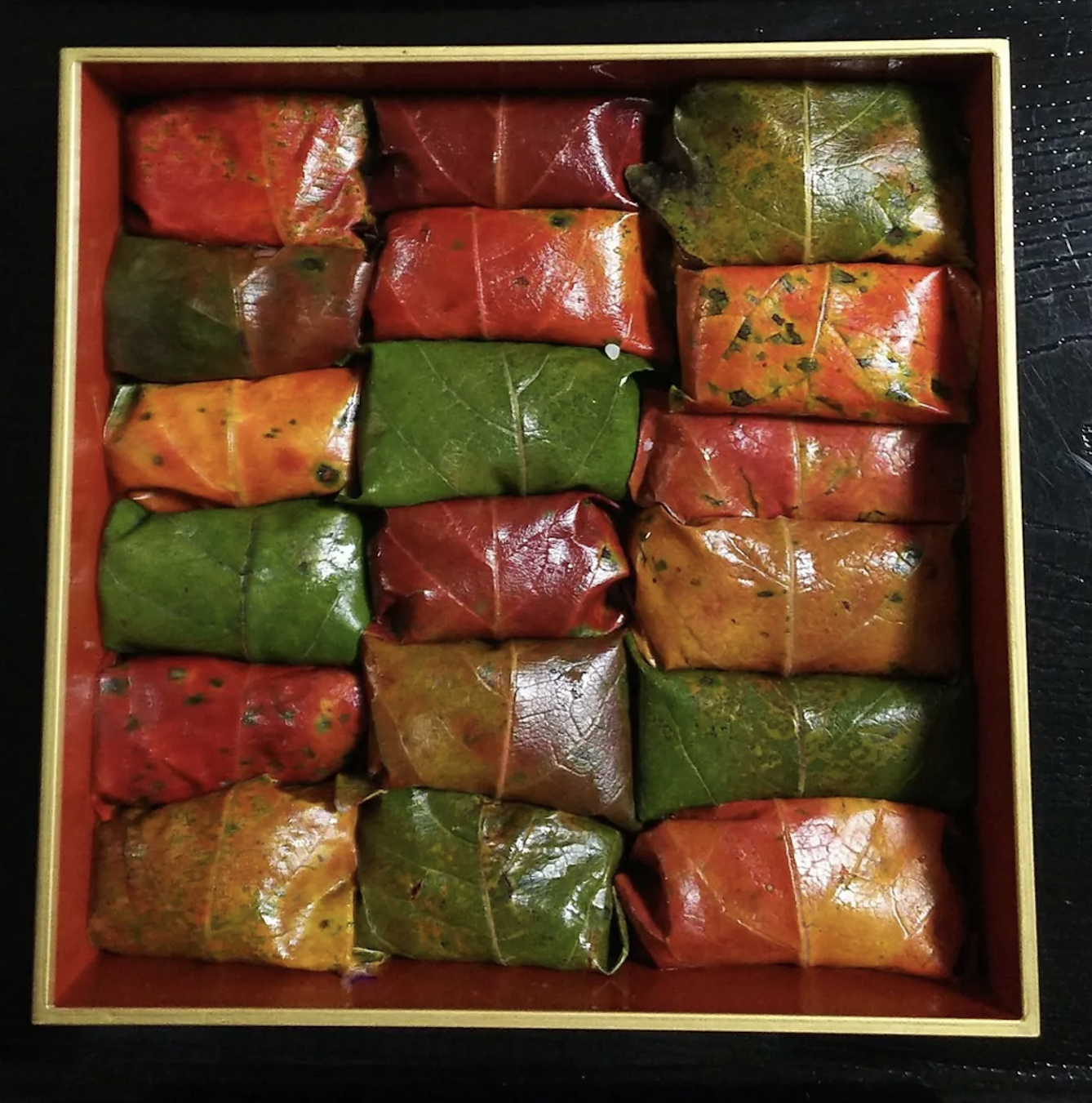
Inedible wrappers
Inedible wrappers often provide antibacterial benefit to the foods enclosed in them. One colorful example is persimmon leaves, kaki no ha 柿の葉.
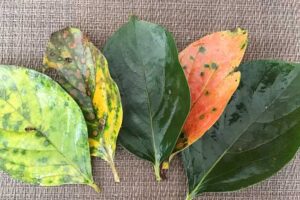
The leaves of astringent persimmons (shibu-gaki 渋柿) are preferred — they are wider, softer and contain more humic and tannic acids that provide anti-bacterial qualities to the leaves. The leaves are usually harvested just after the rainy season. Coarse salt is used to preserve the leaves; for every 100 leaves, 500 grams of coarse salt is used.
Download a copy of my October 2025 newsletter about TSUTSUMU (wrapping), check it out.

